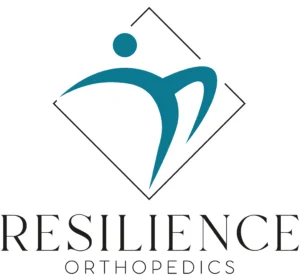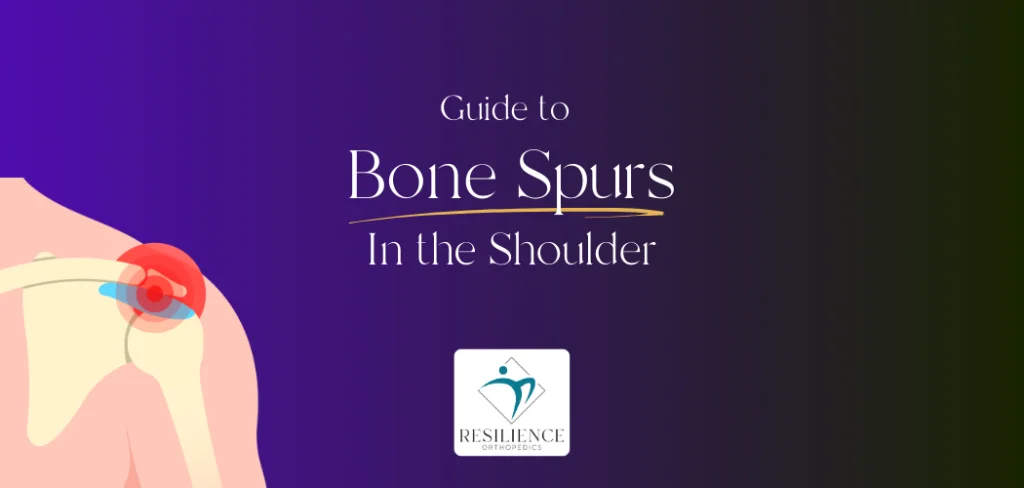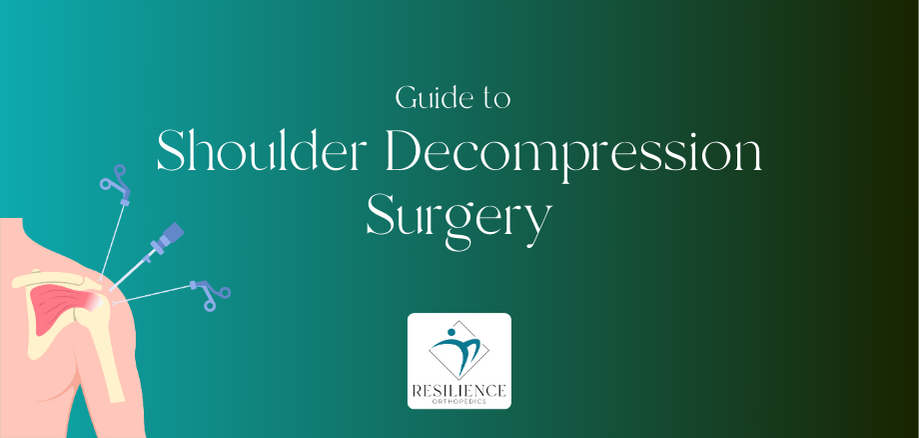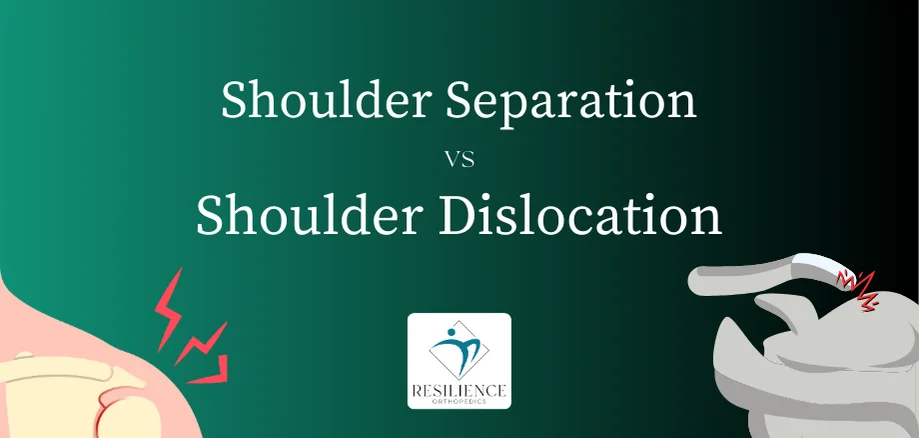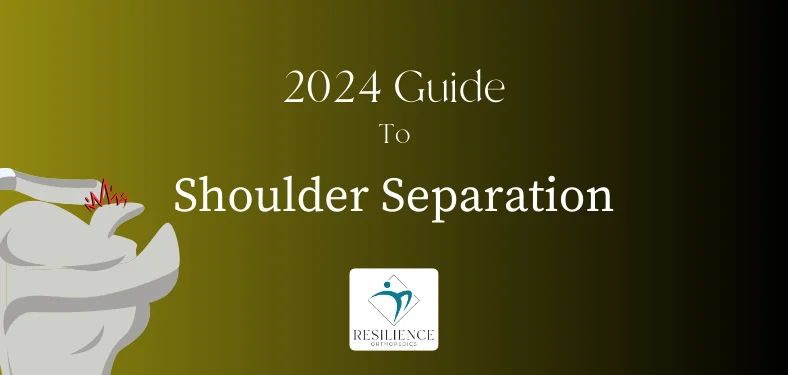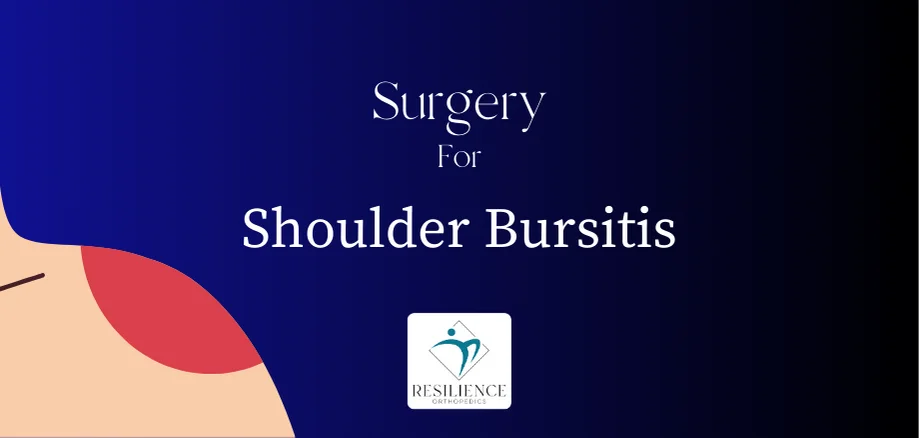Table of Contents
Why Exercises for Bicep Tendonitis Are Key to Recovering
We usually don’t think about our biceps unless we’re working out, but they’re important for many daily movements like lifting, reaching, and pulling. Sometimes your biceps can get injured, leading to conditions like bicep tendonitis. This can make simple tasks like opening a door or carrying groceries feel hard.
You can treat biceps tendonitis in several ways, with the help of your doctor. For example, stretches, ice packs, and strengthening exercises have been shown to help athletes with shoulder issues. Bicep tendonitis rehab exercises and stretches help with:
- Faster recovery
- Less inflammation and shoulder pain
- Improved muscle balance and strength
If you’re looking for guidance on treating your condition, you’ve come to the right place. We’ll go through detailed steps for the top exercises and stretches for biceps tendonitis.
Here’s a summary:
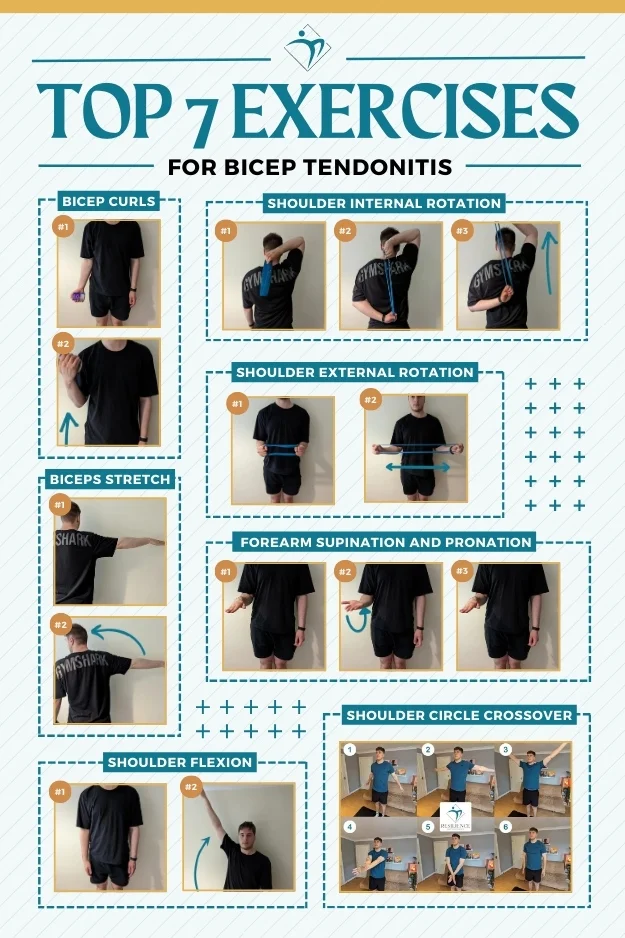
Below, we go through the detailed instructions for simple bicep tendonitis exercises and stretches:
Bicep Tendonitis Exercises with Pictures
Here are our step-by-step instructions.
It’s best to perform bicep tendonitis exercises at the direction of an orthopedic surgeon or physical therapist, to avoid making the inflammation worse.
Note:
- If any of these exercises cause increased pain, stop right away.
- While performing bicep tendonitis exercises, make sure you do them gently.
- Take plenty of rest periods between the repetitions.
- These exercises are only for bicep tendonitis. If you are suffering from other conditions like shoulder dislocation, please seek advice.
1. Biceps Curls
Don’t push yourself here! You’re trying to gently heal your tendon, not build huge biceps.
For biceps curls, start in a standing position and grab a light weight such as a dumbbell or tin can. Let your arm drape to your side with your palm facing forward.
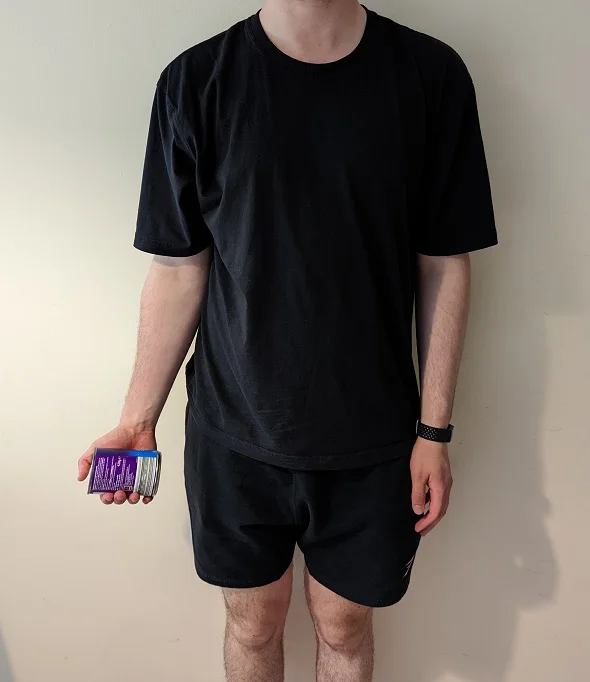
Keep your upper arm straight and lift the weight at your elbow.
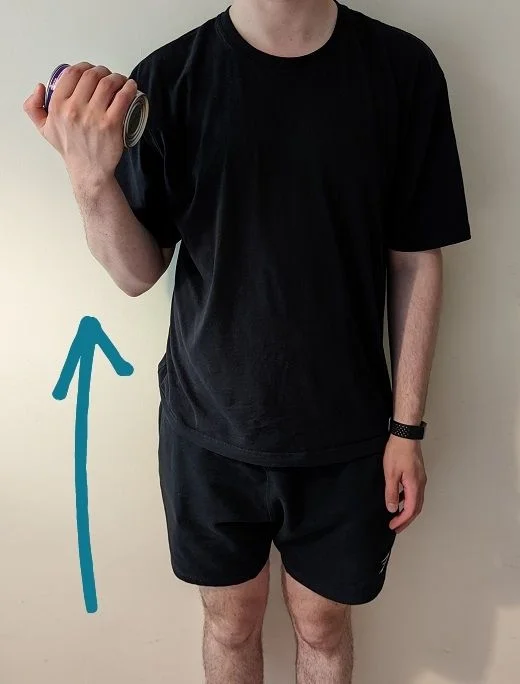
Slowly lower your arm back down. Do this 10 times and then repeat the set 3 times, resting between each set.
2. Biceps Stretch
This stretch is one of the best bicep tendonitis exercises as you can really tailor the intensity to make sure you’re not over-stretching.
To perform a biceps stretch, start by standing facing a wall, about 6 inches away. Raise your arm to the side so that your hand is in line with your shoulder.
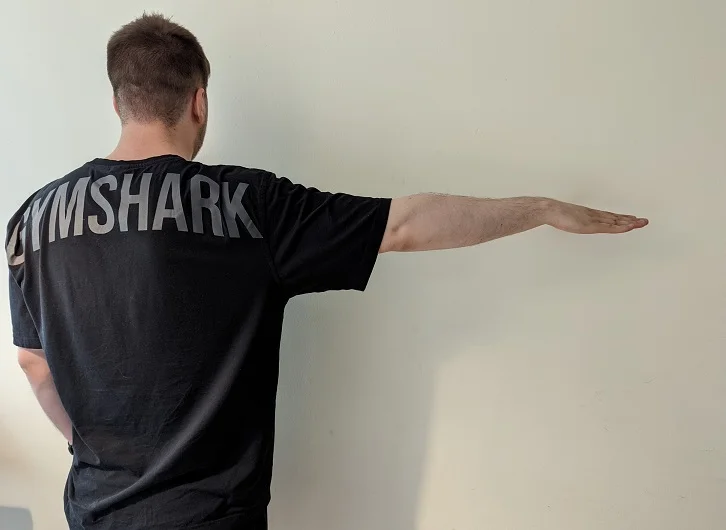
Move your hand slightly forward so that your thumb is touching the wall, with your palms facing down.
Keep that arm in the same position as you twist your body to look away from the raised hand until you feel a stretch in your bicep.
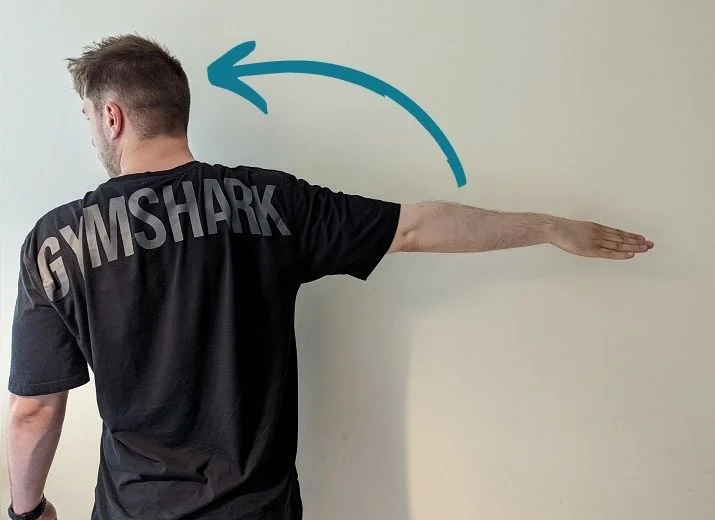
Hold this position for 15 seconds then return to the starting position.
Repeat this 3 times, resting between each set.
Note: Make sure you don’t stretch your shoulder backwards. This can cause overstretching of the tendon, leading to more pain.
Book a Consultation with Dr. Pamela Mehta, MD
The Best Orthopedic Surgeon in San Jose
Dr. Mehta is a board-certified orthopedic surgeon who can help you recover from your joint condition. If you:
- Are Suffering From Pain and Mobility Issues
- Need Orthopedic Assessment and Advice
- Want Treatment From a Top Orthopedic Doctor
We Can Help
3. Shoulder Flexion
Bicep tendonitis exercises are meant to help you to heal, rather than cause further damage – avoid shoulder flexion if it causes any pain in your shoulder!
Stand up with your arm at your side and your palm facing your thigh.
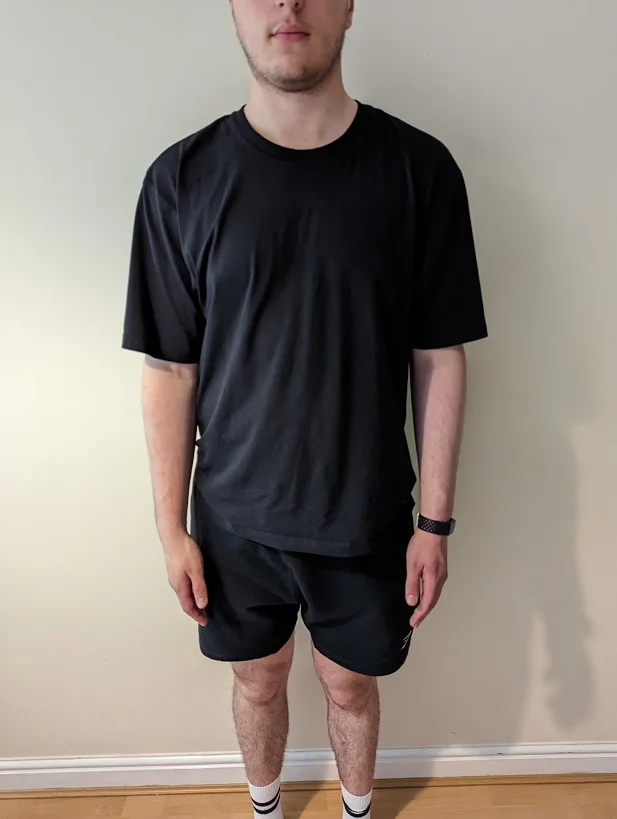
Slowly raise your arm up, keeping the arm straight, until your fingers are pointed up at the sky.
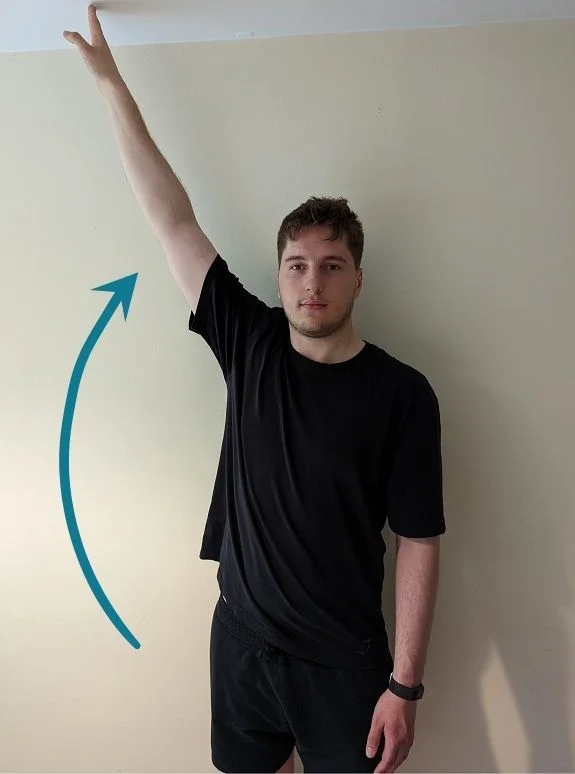
Hold this position for 5 seconds, then return to the starting position. Do this 10 times.
Repeat this 3 times throughout the day, taking plenty of rest between each set.
Note: When performing shoulder flexion, avoid reaching overhead and backward as it can harm the biceps tendon.
4. Shoulder Internal Rotation
For shoulder internal rotation, find a towel, resistance band, or something similar. Hold one end with your non-injured hand, holding it behind your head.
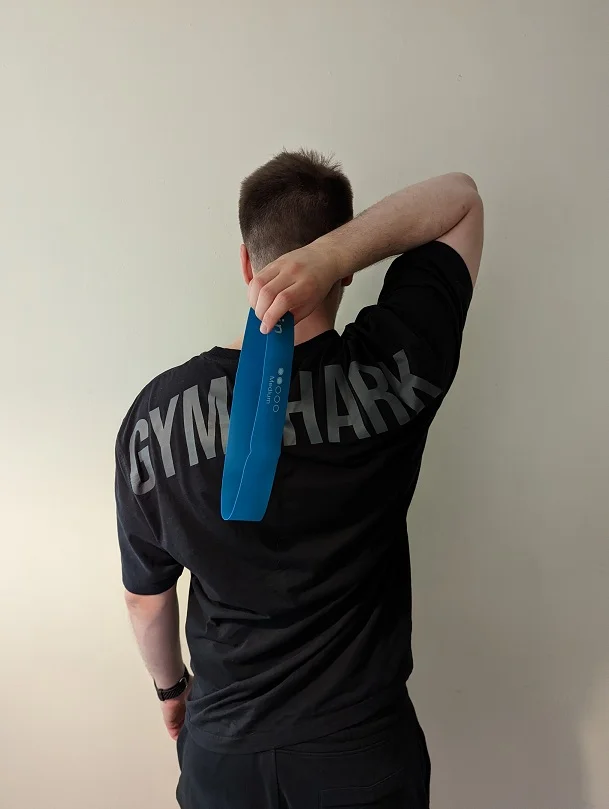
With your injured arm, reach behind your back and take hold of the towel at the level of your lower back.
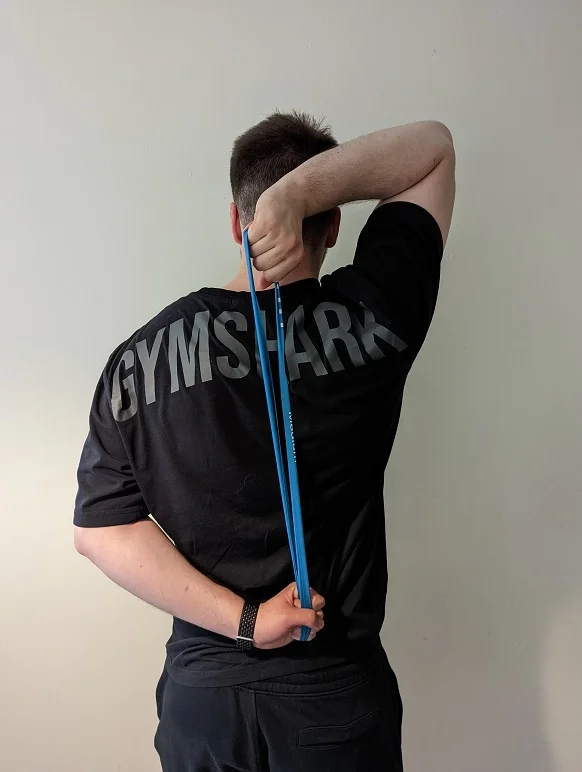
Use your non-injured arm to gently lift your bottom hand so that it reaches up towards your shoulder blades. Keep lifting until you feel it stretching, before it causes any pain, and hold it here for 30 seconds.
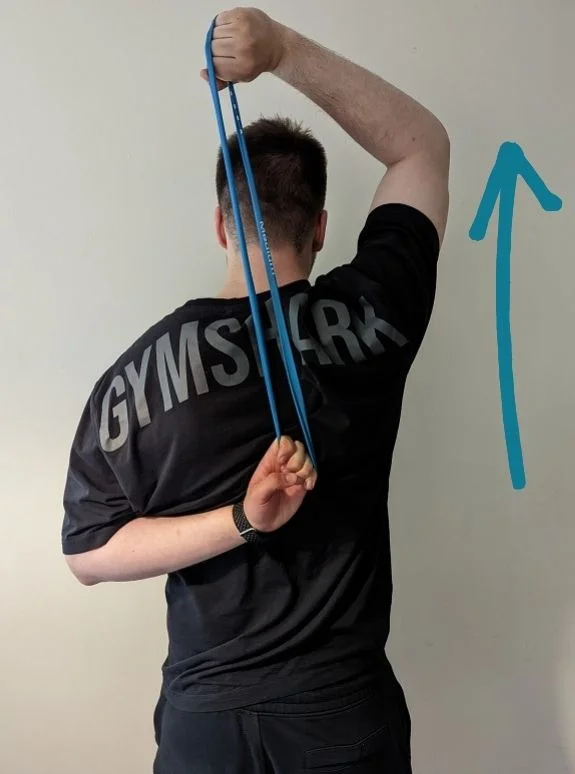
Return to the original position, then repeat again after a rest. Repeat this set of two twice throughout the day.
5. Shoulder External Rotation
To perform external rotation of your shoulder, start by taking something elastic, like an exercise band, in both of your hands. Holding your elbows at your side, hold the exercise band out in front of you at waist height, so that your elbows are at a roughly 90-degree angle. Your palms should be facing down.
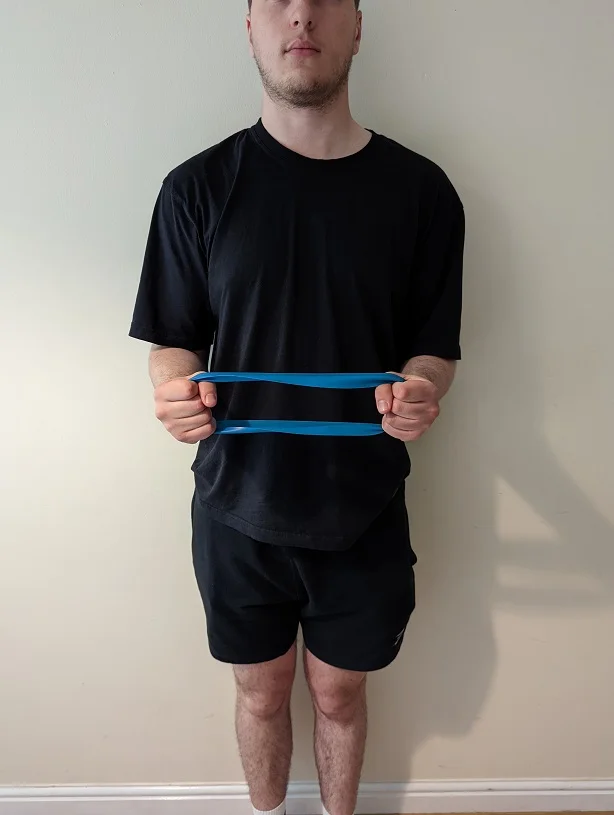
Gently pull the band apart, keeping your elbows stuck to your side, until you feel a gentle stretch in your arm. Slowly bring your hands back together until back in the original position.
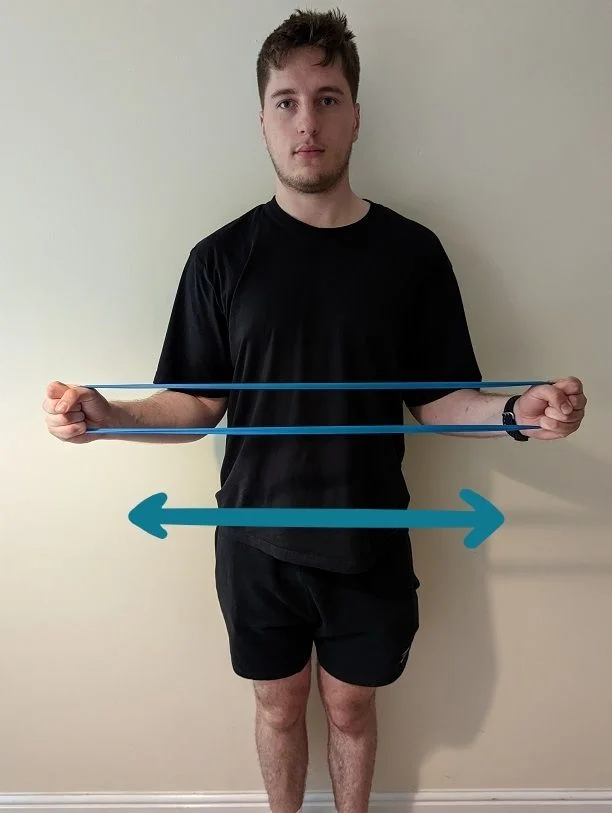
Repeat this 10 times. Complete this set of 10 three times throughout the day.
6. Forearm Supination and Pronation
To do forearm twists, also known as forearm supination and pronation, start from a standing position with your arms by your side. Keep your elbows stuck to your side and bend your elbow at a 90-degree angle so your palms are facing down.
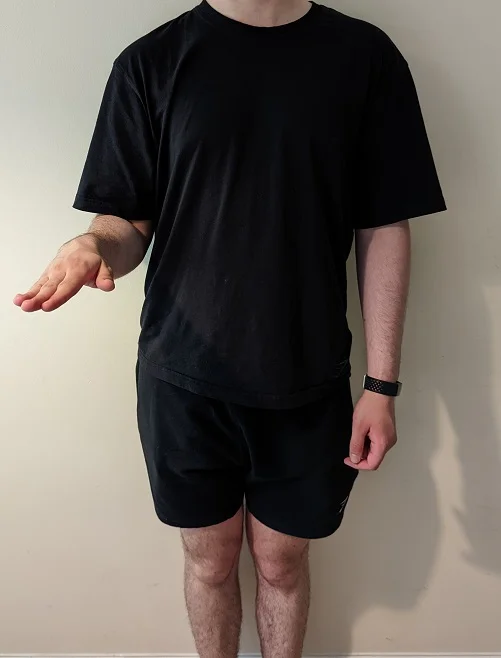
Turn your hands over so that your palms are now facing the sky and hold for 5 seconds.
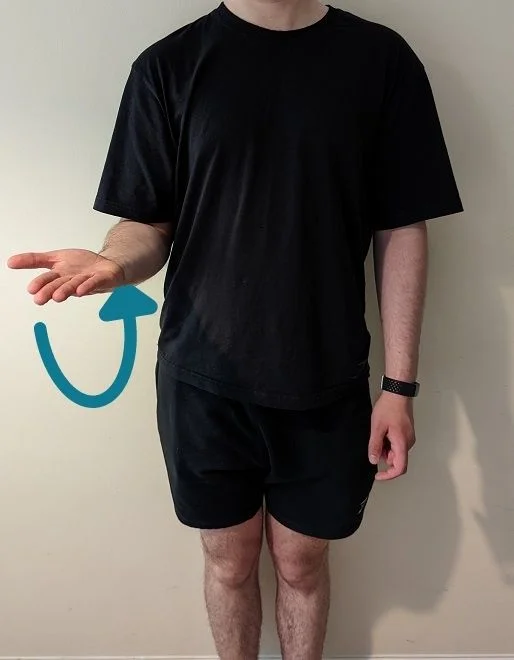
Rotate your hands back to the starting position and hold for 5 seconds.

Repeat this so that you have done each movement 10 times. Do 3 sets throughout the day.
7. Shoulder Circle Crossover
This bicep tendonitis exercise is one of the best mobility exercises to restore your shoulder movement. Here’s how to do it:
- Stand up straight with your arms out to the sides, palms facing forward.
- Pull your shoulder blades back together.
- Move your arms back behind you, extending your shoulders further.
- Raise your arms up while turning your palms forward.
- Once your hands meet, cross them in front of your body until they’re horizontally crossed in front of you.
- Reverse the movement until your palms are behind you facing backwards.
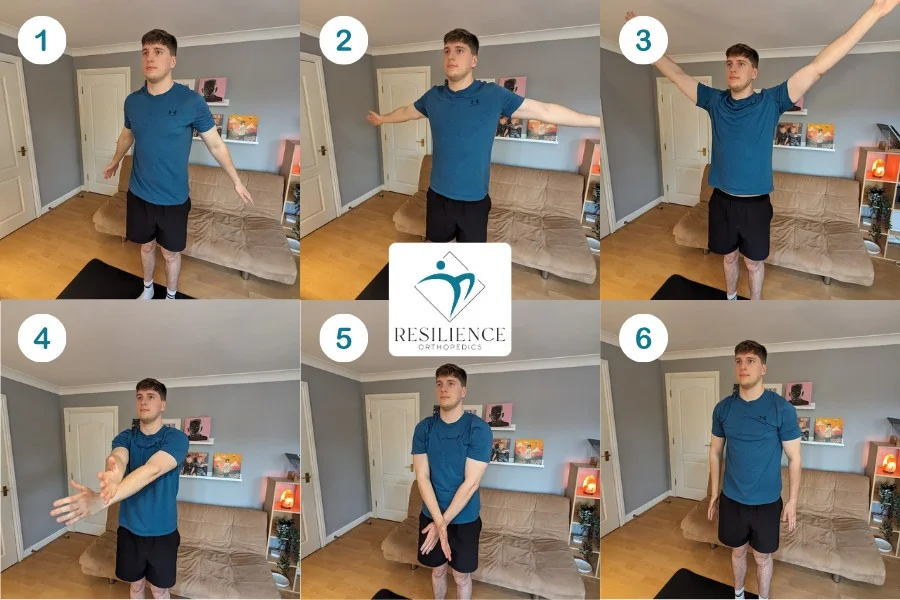
For an example of how this works, check out this video below:

Repeat this exercise for 3 to 6 times, and do 1 to 2 sets. Breathe consistently throughout the exercise and maintain good posture.
Note: Remember not to overextend your shoulders while performing this exercise.
For Acute Biceps Tendonitis
In the first stages, you will need to go slowly and carefully with your exercises. For acute biceps tendonitis, try a gentle swinging motion to help your tendon heal.
Here’s how to do pendular movements:
- Bend at your waist
- Let your arm hang down
- Gently sway in a clockwise or counter clockwise direction
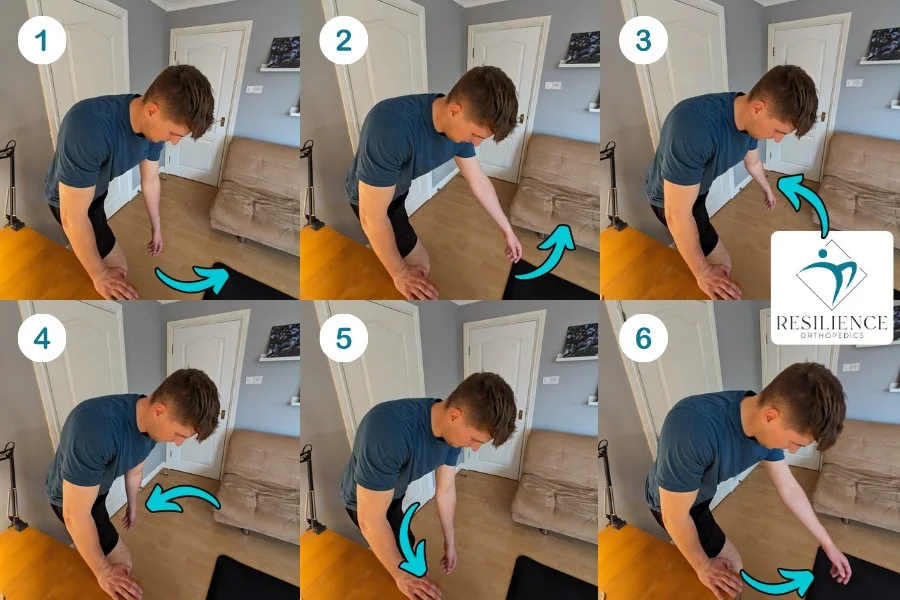
Repeat this for 5 minutes every hour. You’ll notice a significant difference.
Exercises to Avoid with Biceps Tendonitis
As you recover, you should skip exercises where you raise your arms high or in front of you. This can squeeze the biceps tendon and make the pain worse.
Here are some exercises to avoid with biceps tendonitis:
Overhead Lifting
Avoid lifting objects with your arm above 90 degrees. This will lead to overstretching of your biceps tendon leading to more pain.
Exercises such as bicep curls can be very effective for shoulder rehab. Practice these instead to help strengthen your muscles without putting too much stress on the tendon.
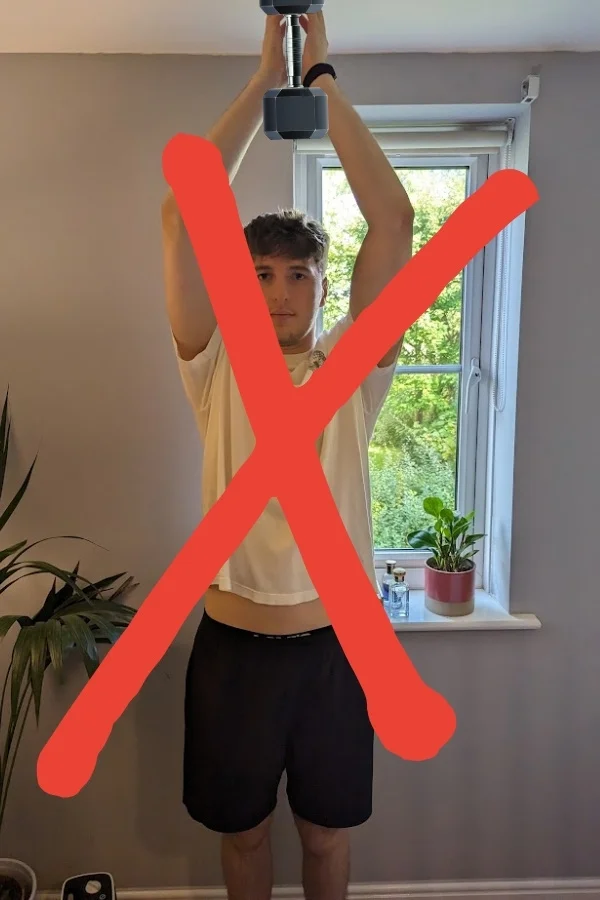
Overhead shoulder presses
Studies show that most men don’t have enough flexibility to move their shoulders well to do behind-the-neck shoulder presses right.
That’s why it’s not a good idea to do this exercise if you have biceps tendinitis.
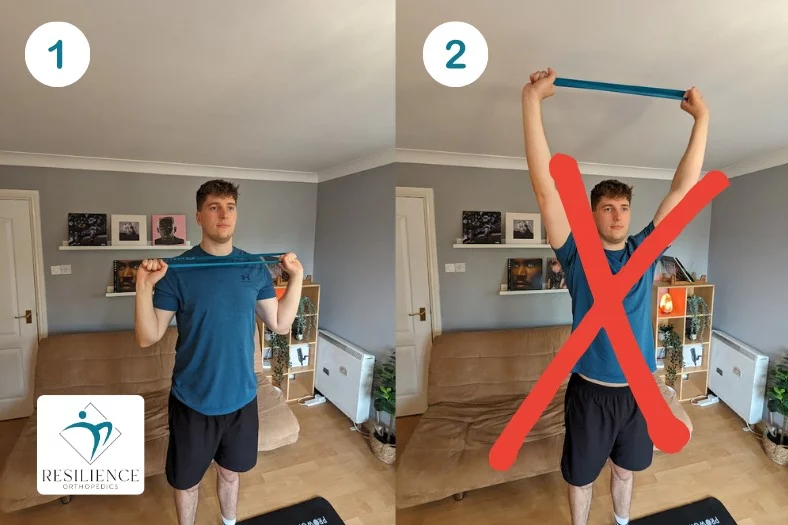
Shoulder Shrugs
Shoulder shrugs involve lifting your shoulders up. This puts direct pressure on your injured biceps tendon, leading to more pain.
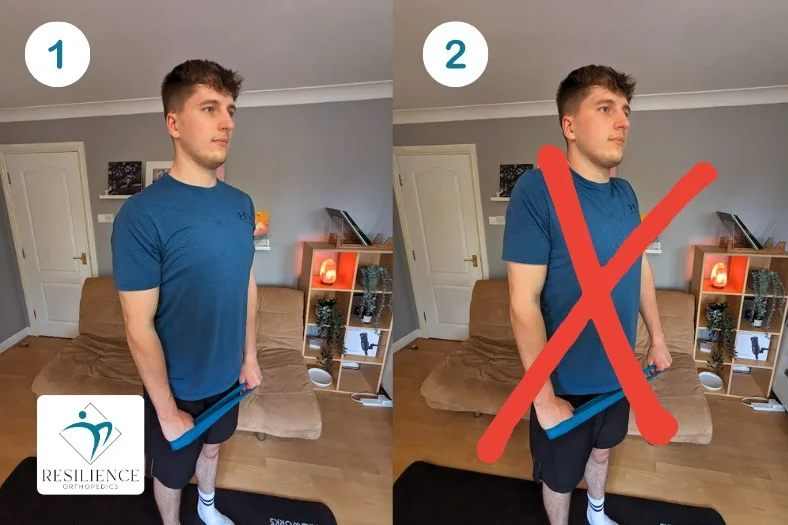
Avoid shoulder shrugs when you have bicep tendonitis.
Push-ups
Push-ups involve lifting your body weight with your arms, leading to more inflammation and pain.
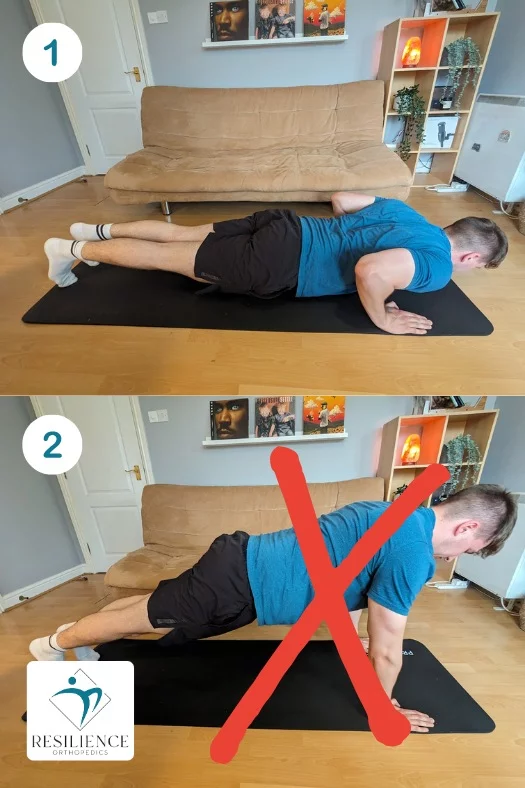
Even once you feel you’re recovering, we’d recommend starting with gentle wall pushups, followed by pushups off your knees only when you feel comfortable that it won’t cause pain.
Lifting Heavy Weights
Heavy lifting puts a lot of stress on your biceps tendon, which can increase your risk of existing symptoms.
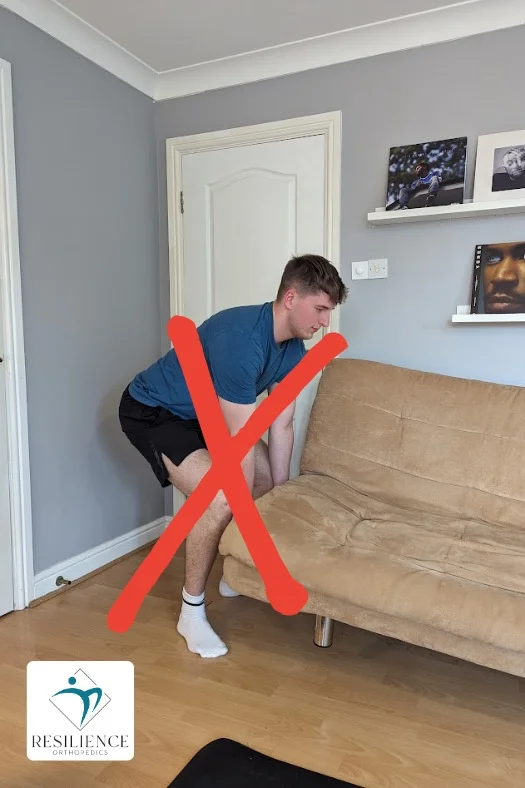
Ask for help with heavy lifting duties until you’re feeling back to 100%!
FAQs
How do I know if I have Biceps Tendonitis?
With biceps tendonitis, you’ll feel pain in the front of your shoulder, especially when lifting your arm.
You might also experience muscle pain down your upper arm and hear a snapping sound in your shoulder.
How often should I do these exercises?
It’s essential to listen to your body and not overdo it. Start with gentle exercises and gradually increase intensity as tolerated.
Aim for consistency, but take plenty of rest between sessions.
When can I get back to normal activities while doing these exercises?
The time it takes to heal from biceps tendonitis varies based on how severe your injury is and how it’s treated.
It might take three to four months to fully recover.
